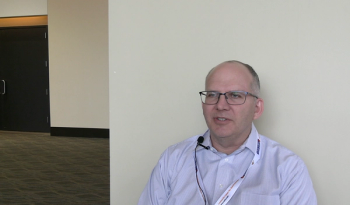
- Spectroscopy-10-01-2019
- Volume 34
- Issue 10
Detecting and Identifying Food Colorants with SERS
SERS is a method that is receiving new attention in the detection, analysis, and identification of both natural and artificial food colorants. Lili He, at the University of Massachusetts, Amherst, recently spoke to Spectroscopy about this important analytical work.
In recent years, consumers are increasingly opting for natural and organic food. This has led many food producers to switch from using artificial ingredients to using natural ones. In some cases, however, questions arise about the authenticity of those ingredients. Lili He, an associate professor in the Department of Food Science at the University of Massachusetts, Amherst, focuses on developing and applying advanced analytical techniques to solve critical and emerging issues in food science. Recently, that focus has turned to using surface enhanced Raman spectroscopy (SERS) in the detection, analysis, and identification of both natural and artificial food colorants. Dr. He recently spoke to Spectroscopy about that work.
You have developed a SERS-based method that is capable of detecting and identifying common food colorants (1). What motivated you to undertake this work?
Currently in the United States, there are seven main artificial colorants, and about 25 natural colorants, that are approved for use in food. There has been growing interest in the food industry in replacing artificial colorants with natural alternatives, mainly because consumers are increasingly demanding products with natural ingredients. However, the authenticity of colorants used in food products has raised increasing concerns. Natural and artificial coloring agents can be visually identical, so any detection method would need to be able to provide information about the chemical composition of the colorants that are present. We believed that SERS could be an effective method for colorant detection and identification.
Why is SERS a good technique for analyzing food colorants?
Colorants with conjugated bond systems are inherently Raman active, and given that Raman spectroscopy measures molecular signatures as a basis to identify the components of a mixture, it can be used to differentiate between visually similar colorants with different molecular structures. In SERS, the detection sensitivity of Raman spectroscopy is enhanced by a nanoparticle substrate. In addition, since each colorant produces a unique spectrum, it is feasible to detect multiple colorants in food. Detecting compounds in food matrices with SERS also has the advantage of being simple and rapid, with minimum sample preparation.
What factors did you consider in your choice of SERS substrate?
In developing the method, we considering the perspective of potential end-users of the method-people who work in the food industry or in food regulation. Therefore, we chose a simple silver nanoparticle substrate that is commercially available, so that the method and database can be easily transferred to the end users, who should not have any difficulty obtaining the substrate.
What results have you achieved so far?
We successfully demonstrated the feasibility of SERS to rapidly detect colorant adulteration, as well as to identify colorants in real commercial food products. Also, we have established a database of all the artificial colorants, and most of the natural colorants, and even some banned colorants. We believe that it is important to include banned colorants in the database, because banned colorants pose great safety concerns to public health. Each colorant has a unique SERS pattern based on its molecular vibrations.
How well did the technique perform on actual food products, compared with its use on aqueous solutions of colorants?
We successfully detected and identified colorants in several real food matrices, including breakfast cereals, candies, crackers, and juices which used artificial or natural colorants. This technique works very well on actual food products, due to its high sensitivity to colorants; there is no significant interference from the background matrices.
What are your next steps in this work?
We will further expand and validate the database to cover all FDA-approved food colorants and banned colorants of concern. We will also explore the use of SERS to study interactions between natural colorants and food ingredients that can affect the stability of colorants. In addition, we will carry out a market survey of a variety of commercial food products claiming to contain natural colorants to identify possible cases of adulteration and mislabeling of colorants and to assess the prevalence of such cases.
We hope that, after successful completion of that study, we will be able to establish a complete SERS spectral database for certified and exempt colorants regulated by the FDA, as well as for selected banned or unapproved colorants. We also hope that we will gain knowledge about the stability of natural colorants in different food matrices by studying interactions between colorants and food ingredients. In addition, we hope to generate information about the current levels and nature of colorant adulteration and misleading labeling in the food market. The developed method and database could be used by industry to assess the quality and authenticity of purchased colorants, as well as to study their degradation kinetics in food and beverage products. Government agencies could also use the methods for rapid screening of any illegal use of food colorants in food products, whether that screening occurs on site or in a laboratory. Information obtained from this project would help industry improve food quality and safety, as well as assist government agencies in making decisions about regulatory considerations and actions regarding food colorants. These actions would lead to a sustainable food colorant market of high quality, reliability, and safety. Therefore, the outcome of this project will benefit the long-term stability of the U.S. food system.
Reference
(1) J.C. Gukowsky, T. Xie, S. Gao, Y. Qu, and L. He, Food Control 92, 267–275 (2018).
Dr. Lili He is Associate Professor of Food Science at University of Massachusetts, Amherst. She received her PhD degree from University of Missouri-Columbia in 2009 and did her postdoctorate training in University of Minnesota between 2009 and 2012. Then she joined the faculty in the Food Science Department at the University of Massachusetts, Amherst as an Assistant Professor in 2012. Dr. He's major research focus is to develop and apply the most advanced and innovative analytical techniques to help solve critical and emerging issues in food science. Her group has developed various surface enhanced Raman scattering based techniques for food safety and food chemistry applications. Dr. He has successfully obtained external funding (over $1.8 M as PI) from federal and industry sources, and published 82 papers. Her excellence has been recognized by receipt of the 2012 Young Scientist Award from the International Union of Food Science and Technology, 2015 ACS-AGFD Young Scientist Award, 2016 Young Investigator Award from Eastern Analytical Symposium, 2016 IFT Samuel Cate Prescott Award for Research, and was selected as one of the Talented 12 by C&EN, the ACS magazine in 2016.
Articles in this issue
about 6 years ago
Using Reference Materials, Part II: Photometric Standardsabout 6 years ago
The 2019 Emerging Leader in Molecular Spectroscopy Awardabout 6 years ago
Vol 34 No 10 Spectroscopy October 2019 Regular Issue PDFNewsletter
Get essential updates on the latest spectroscopy technologies, regulatory standards, and best practices—subscribe today to Spectroscopy.




